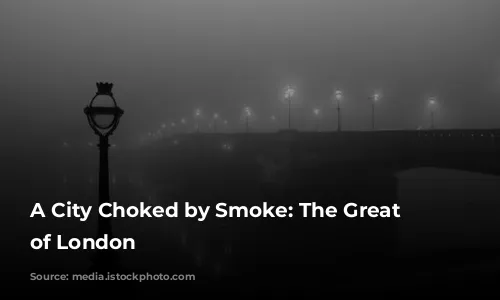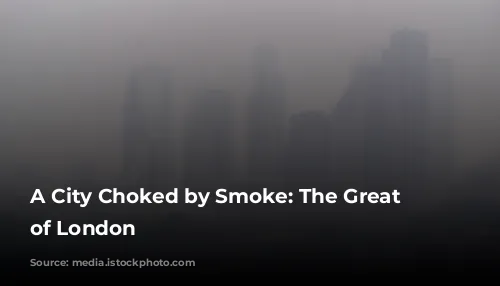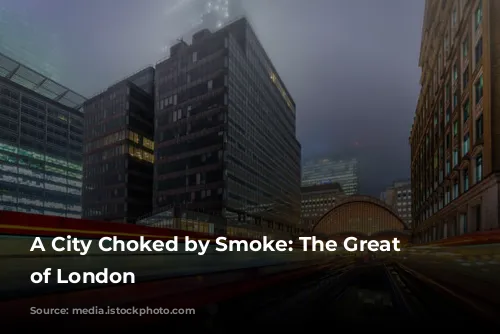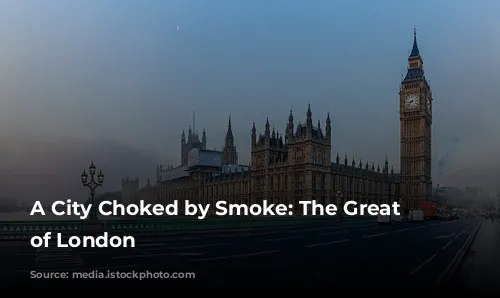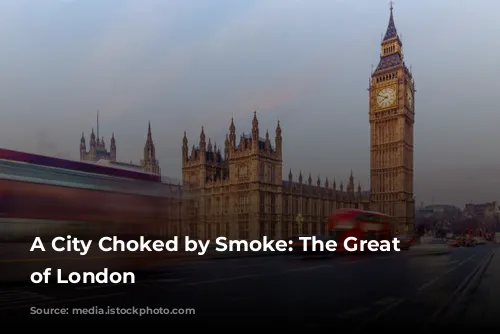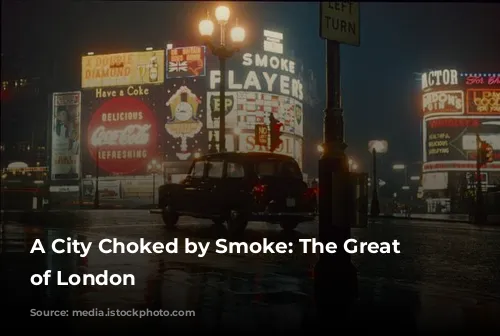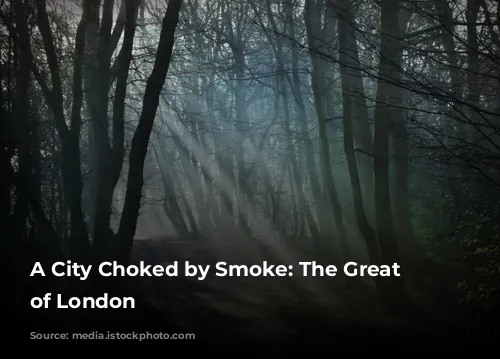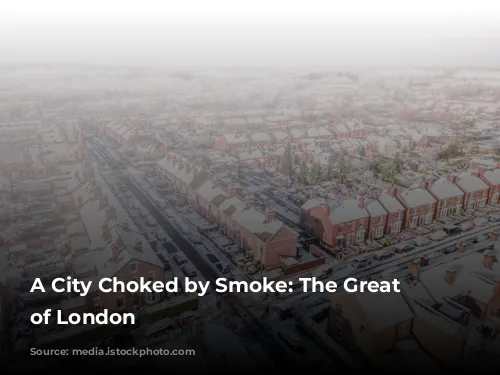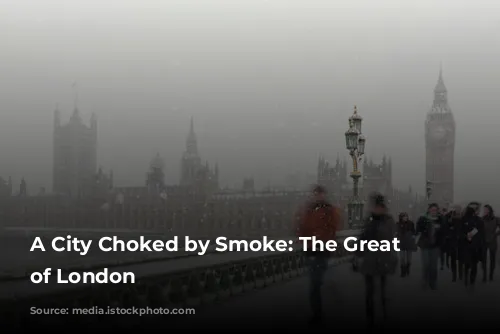Imagine a city blanketed in a thick, yellow fog, so dense that you can’t even see your own feet. This was the reality for Londoners in December 1952, when a suffocating smog descended upon the city, a stark reminder of the dark side of industrial progress.
This wasn’t just any fog. It was a deadly “pea-souper,” a name coined for the dense, yellowish fog that had become a grim feature of London life. This thick haze wasn’t a natural occurrence; it was the product of decades of industrial pollution and the burning of coal, a practice that had fueled London’s growth but also choked its air.
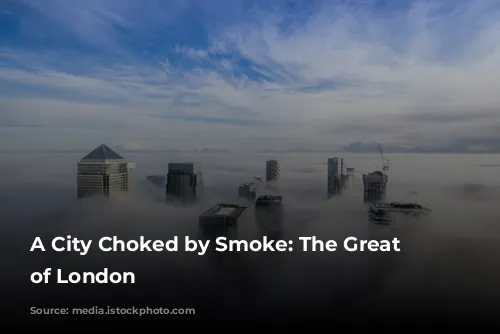
A History of Smog
Long before the Great Smog, London had wrestled with air pollution. As early as the 13th century, burning coal had begun to taint the city’s air. By the 19th century, the problem had worsened, fueled by the Industrial Revolution and the city’s relentless expansion. Factories spewed smoke, and homes relied heavily on coal fires for warmth. The combination of soot and water vapor created a dense, unhealthy fog that hung over the city for days on end. This fog, later dubbed “smog,” became a defining characteristic of London, immortalized in the works of authors like Charles Dickens and Arthur Conan Doyle.
Despite the health hazards, the smog was largely ignored, a silent casualty of the economic boom driven by industry. People accepted the smoky air as a necessary evil, trading their health for the convenience and jobs offered by industrialization.

The Great Smog: A City in Darkness
The Great Smog of 1952, however, was a different beast. It wasn’t just a thick fog; it was a toxic blanket that choked the city for five days. A high-pressure weather system trapped the cold air close to the ground, preventing the pollution from dispersing. The result was a thick, acrid haze that engulfed London, plunging the city into near darkness.
Transportation ground to a halt, with cars abandoned on the roads and even the underground struggling to operate. The smog penetrated homes, filling the air with a pungent smell and a suffocating feeling. Playhouses and concert halls fell silent, unable to stage performances in the thick fog. The smog also fueled a spike in crime, as the darkness offered criminals a cloak of anonymity.
The effects of the Great Smog were devastating. People suffered from respiratory problems, with cases of pneumonia and bronchitis surging. Even animals weren’t spared, with cattle in Smithfield Market reportedly dying from suffocation. The final death toll, though initially underestimated, is now estimated at around 12,000. The Great Smog was a stark reminder of the price London was paying for its industrial progress.

A Turning Point for Environmentalism
The Great Smog acted as a wake-up call, finally forcing the government to take action. After a period of initial hesitation, the Clean Air Act was passed in 1956, a direct response to the deadly fog. This landmark legislation established smoke-free zones throughout the city, restricted the burning of coal in homes and factories, and offered grants to homeowners who switched to cleaner energy sources like oil, gas, and electricity.
The Clean Air Act marked a turning point in the history of environmentalism. It acknowledged the connection between pollution and public health, laying the groundwork for future environmental regulations. Though the transition to cleaner air was gradual, with another smog crisis occurring in 1962, the Clean Air Act ultimately helped improve the health of Londoners and served as a model for environmental action around the world.
